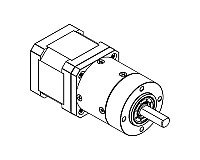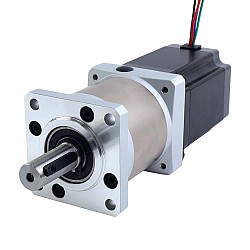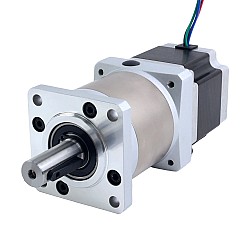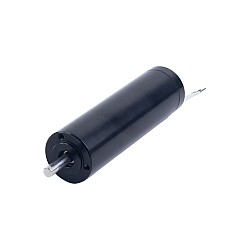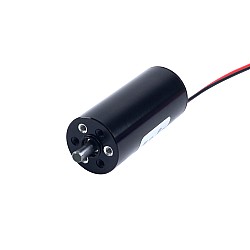A coreless motor is a unique type of motor characterized by its absence of an iron core in the winding coils. This structure gives it significant advantages in terms of lightweight design, high efficiency, and low noise. Coreless motors have already been widely adopted in various fields such as robotics and aerospace.
What is a Coreless Motor?
A coreless motor is a special type of brushless DC motor with an ironless armature.

Instead, the windings are compactly arranged into a hollow cylindrical form, resulting in a lightweight rotor with low moment of inertia.

This design enables rapid acceleration and enhances operational efficiency. The skewed winding structure nearly eliminates cogging torque, allowing for precise control and smooth operation.
Advantages of Coreless Motors
- High Acceleration Capability: Due to the lack of an iron core, coreless motors exhibit extremely low inertia, enabling faster acceleration and deceleration with quicker response times. This makes them ideal for applications requiring rapid and precise changes in motion.
- Smooth and Precise Motion: The complete elimination of cogging torque allows coreless motors to maintain high-precision movement even at low speeds. This is particularly important in applications demanding extreme motion accuracy, such as printing equipment and precision medical operations.
- Low Noise Operation: With no cogging torque and minimal vibration, coreless motors operate more quietly than conventional motors.
- Improved Energy Efficiency: Their unique design results in very low power consumption during no-load or idle states, making them highly suitable for battery-powered devices or applications where energy savings are critical.
- Lightweight and Compact Design: The removal of the iron core significantly reduces the overall weight and size of the motor, making it ideal for applications with strict space and weight constraints.
- High Power Density: Compared to traditional motors of the same size, coreless motors offer higher power density, delivering stronger performance within a smaller volume.
Applications of Coreless Motors
Coreless motors are commonly used in applications requiring lightweight, compact, and rapid acceleration, such as:
- Robotics: Their compact size and fast acceleration make them suitable for tasks requiring quick movements.
- Medical Devices: Coreless motors are integrated into medical equipment such as blood pumps to ensure smooth and stable operation.
- Aerospace: Their small size, lightweight, and rapid acceleration make them ideal for driving various systems in satellites and other aerospace vehicles.
- Printing Equipment: In printers, copiers, and similar devices, coreless motors are an excellent choice for driving print heads and other moving components due to their cogging-free smooth motion.
- Electronic Devices: Compared to traditional motors, coreless motors consume significantly less power during idle or no-load states, improving long-term operational efficiency.
When to Choose a Coreless Motor?
When deciding between a coreless motor and a stepper motor, specific application requirements must be considered. Coreless motors offer rapid response and quick changes in motion direction. Their low inertia ensures smooth rotation, making them particularly suitable for applications demanding high motion smoothness. Additionally, their low noise and vibration levels give them an edge in vibration-sensitive applications. The lightweight construction and high power density make them ideal for scenarios with strict space and weight limitations.
Coreless motors represent an innovative direction in compact, high-efficiency motion control. Their high efficiency, light weight, and small size have led to widespread adoption across numerous industries, with potential for even broader applications in the future.









































































